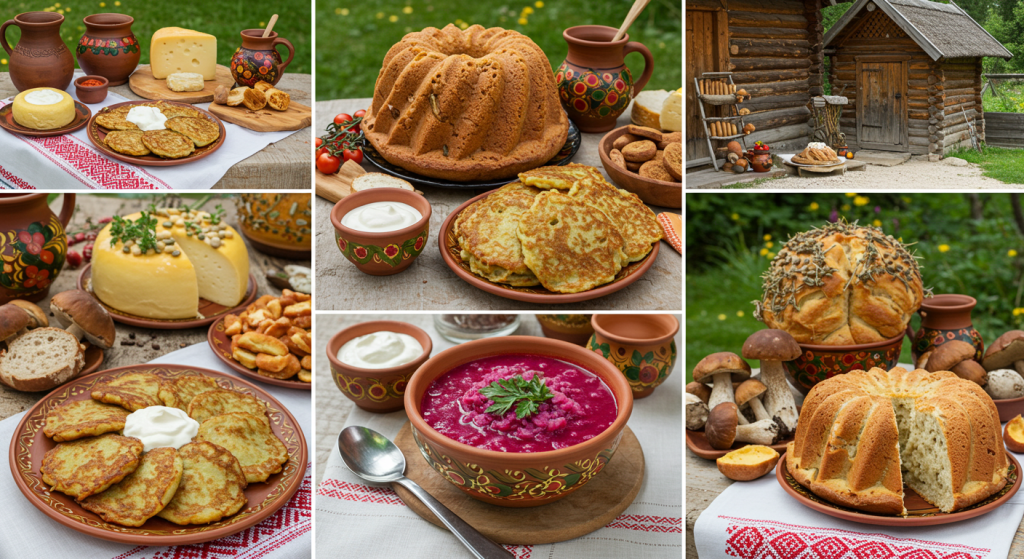
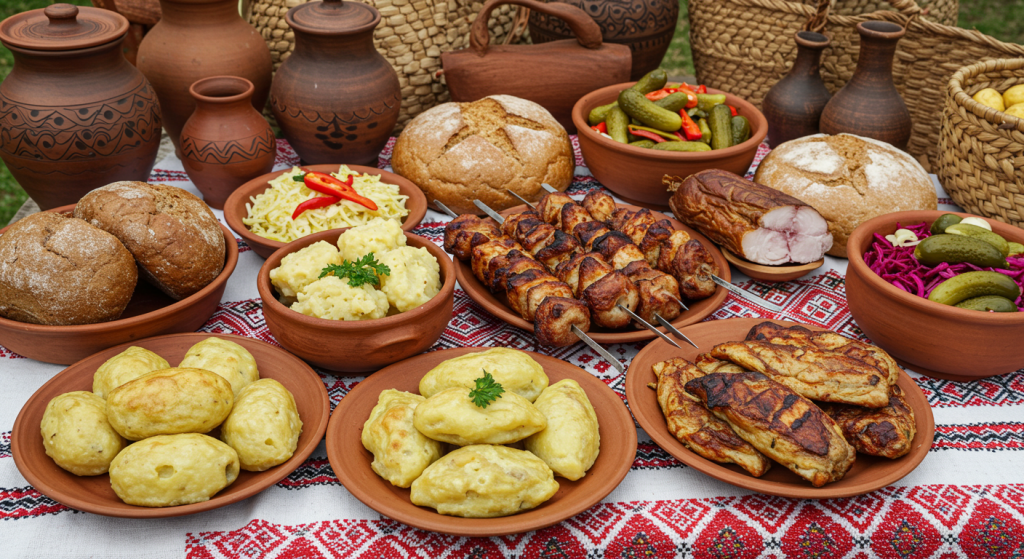
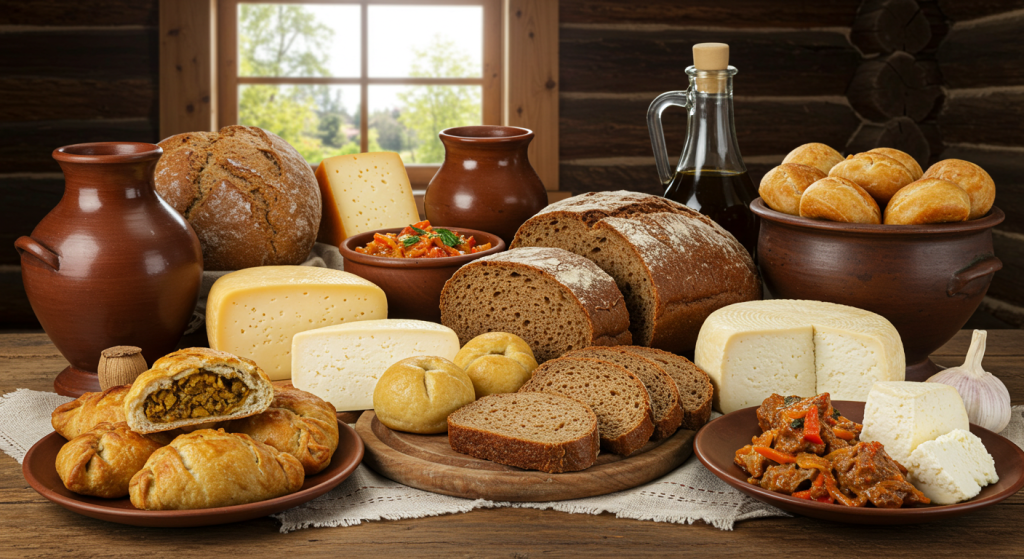
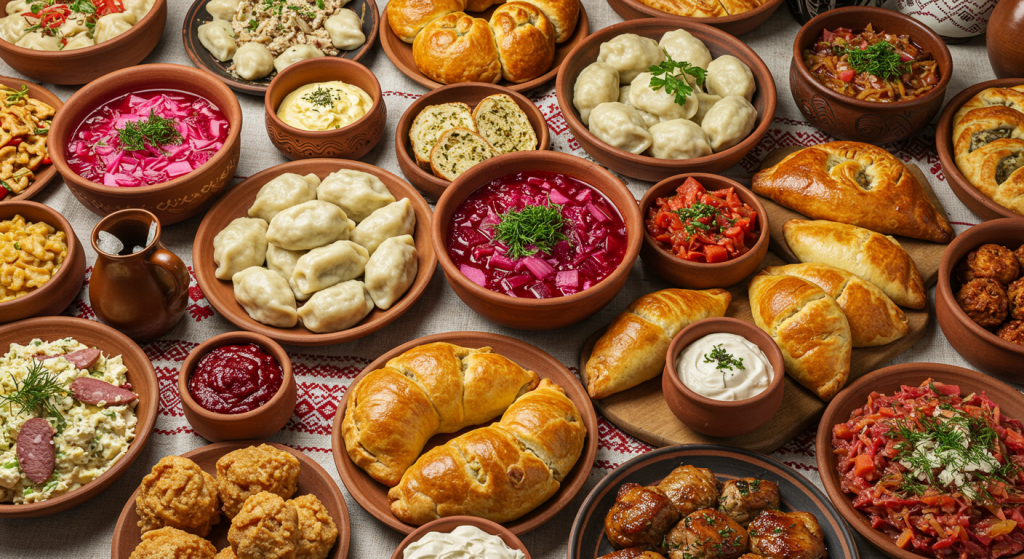
Lithuania, a Baltic gem nestled between Poland, Latvia, and the sea, has a rich and diverse culinary heritage that reflects its history and culture. With influences from neighboring countries and a deep connection to nature, Lithuanian food is hearty, comforting, and bursting with flavors that tell the story of the land and its people.
At the heart of Lithuanian cuisine is the use of natural, locally sourced ingredients. The country’s fertile plains and forests provide a bounty of produce, while its rivers and lakes offer fresh fish. Traditional Lithuanian meals often feature potatoes, rye, and beets—staples that have been cultivated in the region for centuries. The importance of these ingredients is exemplified in the country’s most famous dish: cepelinai.
Cepelinai, or “zeppelin,” are large dumplings made from grated potatoes and filled with minced meat, mushrooms, or curd. Served with a dollop of sour cream and crispy bacon bits, cepelinai is a quintessential Lithuanian comfort food that both locals and visitors eagerly indulge in. It’s a dish rooted in history, often served during special occasions and family gatherings, making it the perfect introduction to Lithuanian cuisine.
Another notable dish is šaltibarščiai, a vibrant cold beet soup that embodies the colors of the Lithuanian flag with its striking pink hue. Made with beets, cucumbers, and dill, and typically served with boiled potatoes on the side, this refreshing soup is particularly popular during the warmer months. Its cool, tangy flavor profile is a delightful way to savor the fresh produce of summer.
Lithuanian culinary tradition also embraces hearty rye bread, known as “rugine duona.” Dark, dense, and often slightly sour, this bread is a staple at Lithuanian tables. It is commonly served alongside various dishes and enjoyed with butter, cheese, or cold cuts. The bread-making process, passed down through generations, is a significant part of Lithuanian culture, with many families still baking their own bread at home.
For those with a sweet tooth, Lithuanian desserts are sure to impress. One traditional sweet treat is šakotis, a unique tree cake shaped like a coniferous tree. Made from a simple batter of eggs, sugar, and flour, the cake is baked on a rotating spit, resulting in a beautifully textured dessert that is often a centerpiece at weddings and celebrations.
Seasonal fruits, especially berries such as blueberries, bilberries, and strawberries, play a vital role in Lithuanian desserts as well. These fruits are sometimes transformed into jams and preserves, or used to create delicious pastries like pyragai, which are sweet, filled pastries enjoyed during festive occasions.
In addition to the dishes, drinks such as kvass— a fermented beverage made from rye bread— and traditional herbal teas contain the essence of Lithuania’s agricultural bounty. These beverages are often savored alongside meals, enhancing the overall dining experience.
Whether you’re exploring the cobblestone streets of Vilnius or enjoying a countryside retreat, savoring Lithuanian food is an unforgettable experience. With its focus on simplicity, freshness, and rich flavors, Lithuanian cuisine is a celebration of the land and its heritage, inviting everyone to taste and appreciate its delightful offerings. So the next time you’re looking for a culinary adventure, look no further than Lithuania, where each dish tells a story waiting to be discovered.
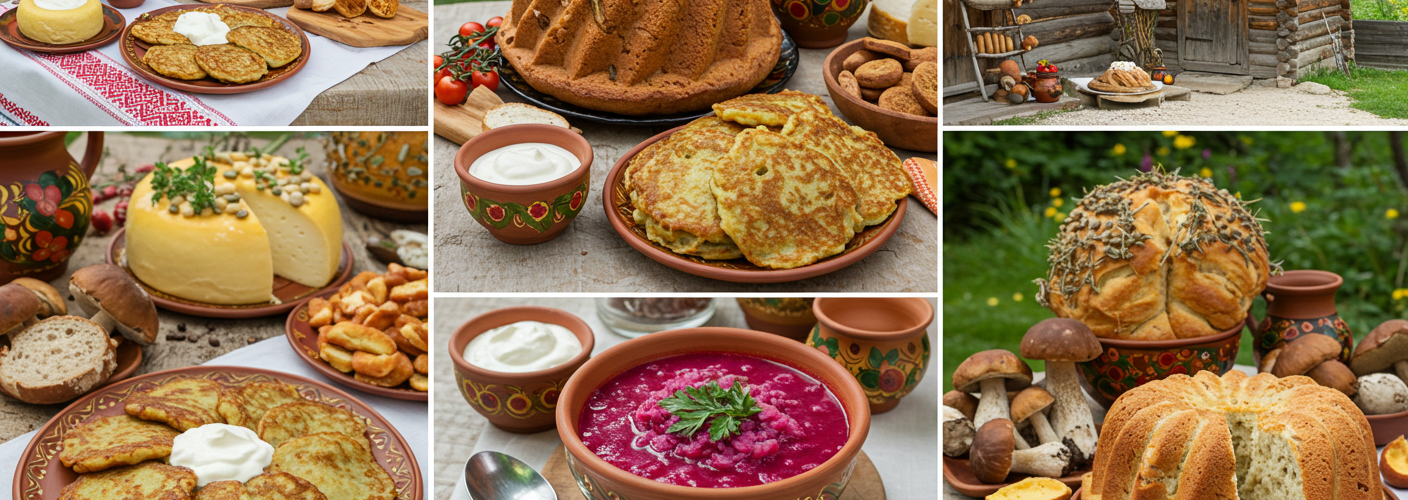



Add comment